Wallenfeldt J. The American Revolutionary War and the War of 1812: People, Politics, and Power
Подождите немного. Документ загружается.

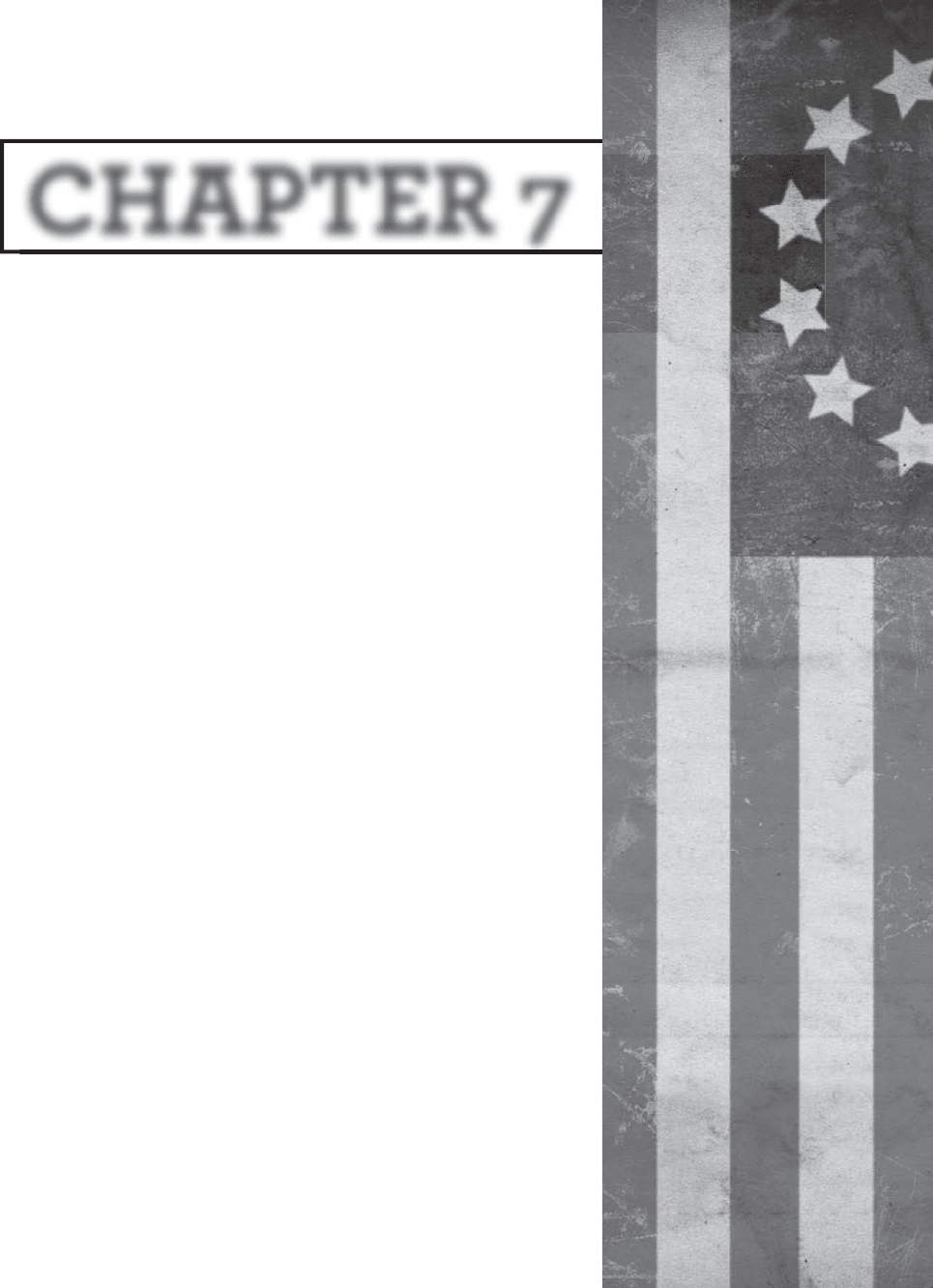
ChAPTER 7
The War of 1812:
Major Causes
T
he problem of fi nancing and organizing the Revolutionary
War sometimes overlapped with Congress’s other major
problem, that of defi ning its relations with the states. The
Congress, being only an association of states, had no power
to tax individuals. The Articles of Confederation, a plan of
government organization adopted and put into practice by
Congress in 1777, although not o cially ratifi ed by all the
states until 1781, gave Congress the right to make requisi-
tions on the states proportionate to their ability to pay. The
states in turn had to raise these sums by their own domestic
powers to tax, a method that state legislators looking for
reelection were reluctant to employ. The result was that many
states were constantly in heavy arrears, and, particularly
after the urgency of the war years had subsided, the
Congress’s ability to meet expenses and repay its war debts
was crippled.
Ultimately the Articles of Confederation provided a weak
central government and proved inadequate to govern the
growing nation. A new constitution was created in 1787, rati-
fi ed in 1788, and took e ect in 1789. George Washington was
the fi rst president, and his sober and reasoned judgments
were instrumental in establishing both the tenor of the coun-
try and the precedents of the executive o ce. Under the new
Constitution, the country began to grow almost immediately.
By the Louisiana Purchase of 1803, during the administra-
tion of Thomas Je erson, the third president (1801–09), the

176 | The American Revolutionary War and the War of 1812: People, Politics, and Power
United States acquired from France the
entire western half of the Mississippi River
basin, thereby nearly doubling the size
of the national territory. The movement
into the lands west of the Appa lachians
thenceforth became a flood.
The tensions that caused the War of
1812 arose from the French revolutionary
and Napoleonic Wars (1792–1815). During
this nearly constant conflict between
France and Britain, American interests
were injured by each of the two countries’
endeavours to block the United States
from trading with the other.
American shipping initially pros-
pered from trade with the French and
Spanish empires, although the British
countered the U.S. claim that “free ships
make free goods” with the belated
enforcement of the so-called Rule of 1756
(trade not permitted in peacetime would
not be allowed in wartime). The Royal
Navy did enforce the act from 1793 to
1794, especially in the Caribbean Sea,
before the signing of the Jay Treaty
(Nov. 19, 1794). Under the primary terms
of the treaty, American maritime com-
merce was given trading privileges in
England and the British East Indies,
Britain agreed to evacuate forts still held
in the Northwest Territory by June 1,
1796, and the Mississippi River was
declared freely open to both countries.
Although the treaty was ratified by both
countries, it was highly unpopular in the
United States and was one of the rally-
ing points used by the pro-French
Republicans, led by Jeerson and
Madison, in wresting power from the
pro-British Federalists, led by George
Washington and John Adams, the sec-
ond president (1797–1801).
After Jeerson became president in
1801, relations with Britain slowly deteri-
orated, and systematic enforcement of
the Rule of 1756 resumed after 1805.
Compounding this troubling develop-
ment, the decisive British naval victory
at the Battle of Trafalgar (Oct. 21, 1805)
and eorts by the British to blockade
French ports prompted the French
emperor, Napoleon, to cut o Britain
from European and American trade. The
Berlin Decree (Nov. 21, 1806) established
Napoleon’s Continental System, which
impinged on U.S. neutral rights by desig-
nating ships that visited British ports as
enemy vessels. The British responded
with Orders in Council (Nov. 11, 1807)
that required neutral ships to obtain
licenses at English ports before trading
with France or French colonies. In turn,
France announced the Milan Decree
(Dec. 17, 1807), which strengthened the
Berlin Decree by authorizing the capture
of any neutral vessel that had submitted
to search by the British. Consequently,
American ships that obeyed Britain faced
capture by the French in European ports,
and if they complied with Napoleon’s
Continental System, they could fall prey
to the Royal Navy.
IMPRESSMENTS
The Royal Navy’s use of impressment to
keep its ships fully crewed also pro-
voked Americans. Also called crimping,
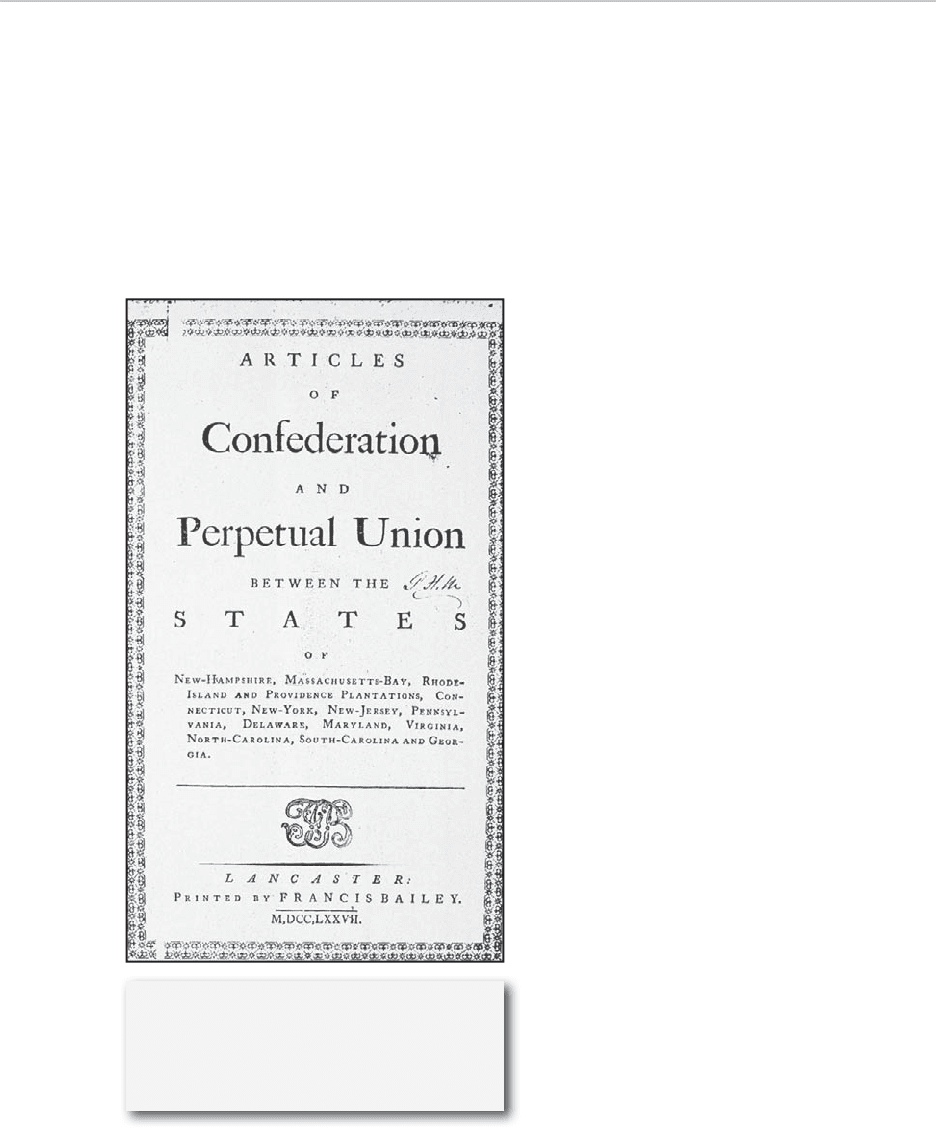
The War of 1812: Major Causes | 177
men were held to their duty by uncom-
promising and brutal discipline, although
in war they seem to have fought with no
less spirit and courage than those who
served voluntarily. The “recruiters” preyed
to a great extent upon men from the lower
classes who were, more often than not,
vagabonds or even prisoners. Sources of
supply were waterfront boardinghouses,
brothels, and taverns whose owners
victimized their own clientele. In the
early 19th century the Royal Navy would
halt U.S. vessels to search for British
deserters and in the process would not
infrequently impress naturalized Ameri-
can citizens who were on board. In 1807
the frigate H.M.S. Leopard fi red on the
U.S. Navy frigate Chesapeake and seized
four sailors, three of them U.S. citizens.
London eventually apologized for this
incident, but it came close to causing war
at the time. Je erson, however, chose to
exert economic pressure against Britain
and France by pushing Congress in
December 1807 to pass the Embargo Act,
which forbade all export shipping from
U.S. ports and most imports from Britain.
The results were catastrophic for
American commerce and produced bitter
alienation in New England, where the
embargo (ridiculed in a famous cartoon
of the day with the backwards spelling
“O grab me”) was held to be a Southern
plot to destroy New England’s wealth.
Indeed, the Embargo Act hurt Americans
more than the British or French, and
many Americans simply chose to defy it.
Just before Je erson left o ce in 1809,
Congress replaced the Embargo Act with
impressment was the enforcement of
military or naval service on able-bodied
but unwilling men through crude and
violent methods. Until the early 19th
century this practice fl ourished in port
towns throughout the world. Generally
impressment could provide e ective
crews only when patriotism was not an
essential of military success. Impressed
The Articles of Confederation served as
the fi rst constitution of the 13 United
States of America. MPI/Hulton Archive/
Getty Images
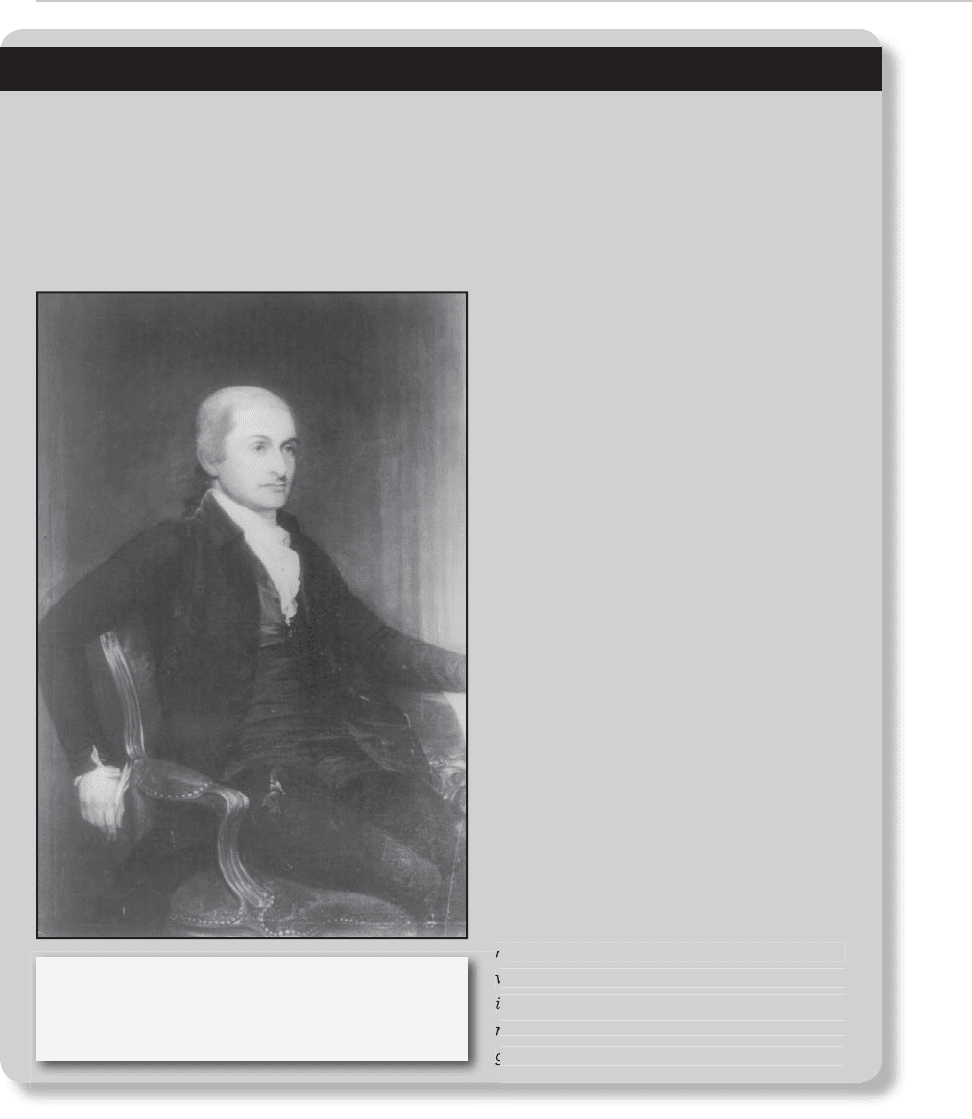
178 | The American Revolutionary War and the War of 1812: People, Politics, and Power
Signed on Nov. 19, 1794, the Jay Treaty assuaged antagonisms between the United States and
Great Britain, established a base upon which America could build a sound national economy, and
assured its commercial prosperity.
Negotiations were undertaken because of the fears of Federalist leaders that disputes with
Great Britain would lead to war. In the treaty Britain, conceding to primary American grievances,
agreed to evacuate the Northwest Territory by June 1, 1796; to compensate for its depredations
against American shipping; to end dis-
crimination against American commerce;
and to grant the United States. trading
privileges in England and the British East
Indies. Signed in London by Lord Grenville,
the British foreign minister, and John Jay,
U.S. chief justice and envoy extraordinary,
the treaty also declared the Mississippi
River open to both countries; prohibited
the outfi tting of privateers by Britain’s
enemies in U.S. ports; provided for pay-
ment of debts incurred by Americans to
British merchants before the American
Revolution; and established joint commis-
sions to determine the boundaries between
the United States and British North
America in the Northwest and Northeast.
By February 1796 the treaty, with the
exception of an article dealing with West
Indian trade, had been ratifi ed by the United
States and Great Britain. France, then at
war with England, interpreted the treaty as a
violation of its own commercial treaty of 1778
with the United States. This resentment led to
French maritime attacks on the United States
and between 1798 and 1800 to an undeclared
naval war. Finally, the commissions pro-
vided for by the Jay Treaty gave such an
impetus to the principle of arbitration that
modern international arbitration has been
generally dated from the treaty’s ratifi cation.
In Focus: The Jay Treaty
naval war. Finally, the commissions pro-
vided for by the Jay Treaty gave such an
impetus to the principle of arbitration that
modern international arbitration has been
generally dated from the treaty’s ratifi cation.
John Jay, the fi rst chief justice of the United
States. Library of Congress Prints and Photo-
graphs Division

from this discontent and attempted to
form an Indian confederation to counter-
act American expansion. Although Maj.
Gen. Isaac Brock, the British commander
of Upper Canada (modern Ontario), had
orders to avoid worsening American
frontier problems, American settlers
blamed British intrigue for heightened
tensions with Indians in the Northwest
Territory. As war loomed, Brock sought
to augment his meagre regular and Can-
adian militia forces with Indian allies,
which was enough to confirm the worst
fears of American settlers. Brock’s eorts
were aided in the fall of 1811, when Indiana
territorial governor William Henry
Harrison fought the Battle of Tippecanoe
and destroyed the Indian settlement at
Prophet’s Town (near modern Battle
Ground, Ind.). Harrison’s foray convinced
most Indians in the North west Territory
that their only hope of stemming further
encroachments by American settlers lay
with the British. American settlers, in
turn, believed that Britain’s removal from
Canada would end their Indian prob-
lems. Meanwhile, Canadians suspected
that American expansionists were using
Indian unrest as an excuse for a war of
conquest.
Under increasing pressure, Madison
summoned the U.S. Congress into ses-
sion in November 1811. Pro-war western
and southern Republicans (War Hawks)
assumed a vocal role, especially after
Kentucky War Hawk Henry Clay was
elected speaker of the House of Repre-
sentatives. Madison sent a war message
the Non-Intercourse Act, which exclu-
sively forbade trade with Great Britain
and France. This measure also proved
ineective, and it was replaced by Macon’s
Bill No. 2 (May 1, 1810) that resumed trade
with all nations but stipulated that if
either Britain or France dropped com-
mercial restrictions, the United States
would revive nonintercourse against the
other. In August, Napoleon insinuated
that he would exempt American shipping
from the Berlin and Milan decrees.
Although the British demonstrated that
French restrictions continued, the new
American president, Pres. James
Madison, reinstated nonintercourse
against Britain in November 1810, thereby
moving one step closer to war.
Britain’s refusal to yield on neutral
rights derived from more than the emer-
gency of the European war. British
manufacturing and shipping interests
demanded that the Royal Navy promote
and sustain British trade against Yankee
competitors. The policy born of that atti-
tude convinced many Americans that
they were being consigned to a de facto
colonial status. Britons, on the other hand,
denounced American actions that eec-
tively made the United States a participant
in Napoleon’s Continental System.
Events on the U.S. northwestern
frontier fostered additional friction.
Indian fears over American encroachment
coincidentally became conspicuous as
Anglo-American tensions grew. Shawnee
brothers Tecumseh and Tenskwatawa
(The Prophet) attracted followers arising
The War of 1812: Major Causes | 179

180 | The American Revolutionary War and the War of 1812: People, Politics, and Power
The onset of war both surprised and
chagrined the British government, espe-
cially because it was preoccupied with the
fight against France. In addition, political
changes in Britain had already moved the
government to assume a conciliatory
posture toward the United States. Prime
Minister Spencer Perceval’s assassination
on May 11, 1812, brought to power a more
moderate Tory government under Lord
Liverpool. British West Indies planters
had been complaining for years about the
interdiction of U.S. trade, and their growing
influence, along with a deepening reces-
sion in Great Britain, convinced the
Liverpool ministry that the Orders in
Council were averse to British interests. On
June 16, two days before the United States
declared war, the Orders were suspended.
Some have viewed the timing of this
concession as a lost opportunity for peace
because slow transatlantic communica-
tion meant a month’s delay in delivering
the news to Washington. Yet, because
Britain’s impressment policy remained in
place and frontier Indian wars continued,
in all likelihood the repeal of the Orders
alone would not have prevented war.
to the U.S. Congress on June 1, 1812, and
signed the declaration of war on June 18,
1812. The vote seriously divided the
House (79–49) and was gravely close in
the Senate (19–13). Because seafaring
New Englanders opposed the war, while
westerners and southerners supported
it, Federalists accused war advocates of
expansionism under the ruse of pro-
tecting American maritime rights.
Expansionism, however, was not as much
a motive as was the desire to defend
American honour. The United States
attacked Canada because it was British,
but no widespread aspiration existed to
incorporate the region. The prospect of
taking East and West Florida from Spain
encouraged southern support for the war,
but southerners, like westerners, were
sensitive about the United States’s repu-
tation in the world. Furthermore, British
commercial restrictions hurt American
farmers by barring their produce from
Europe. Regions seemingly removed
from maritime concerns held a material
interest in protecting neutral shipping.
“Free trade and sailors’ rights” was not an
empty phrase for those Americans.
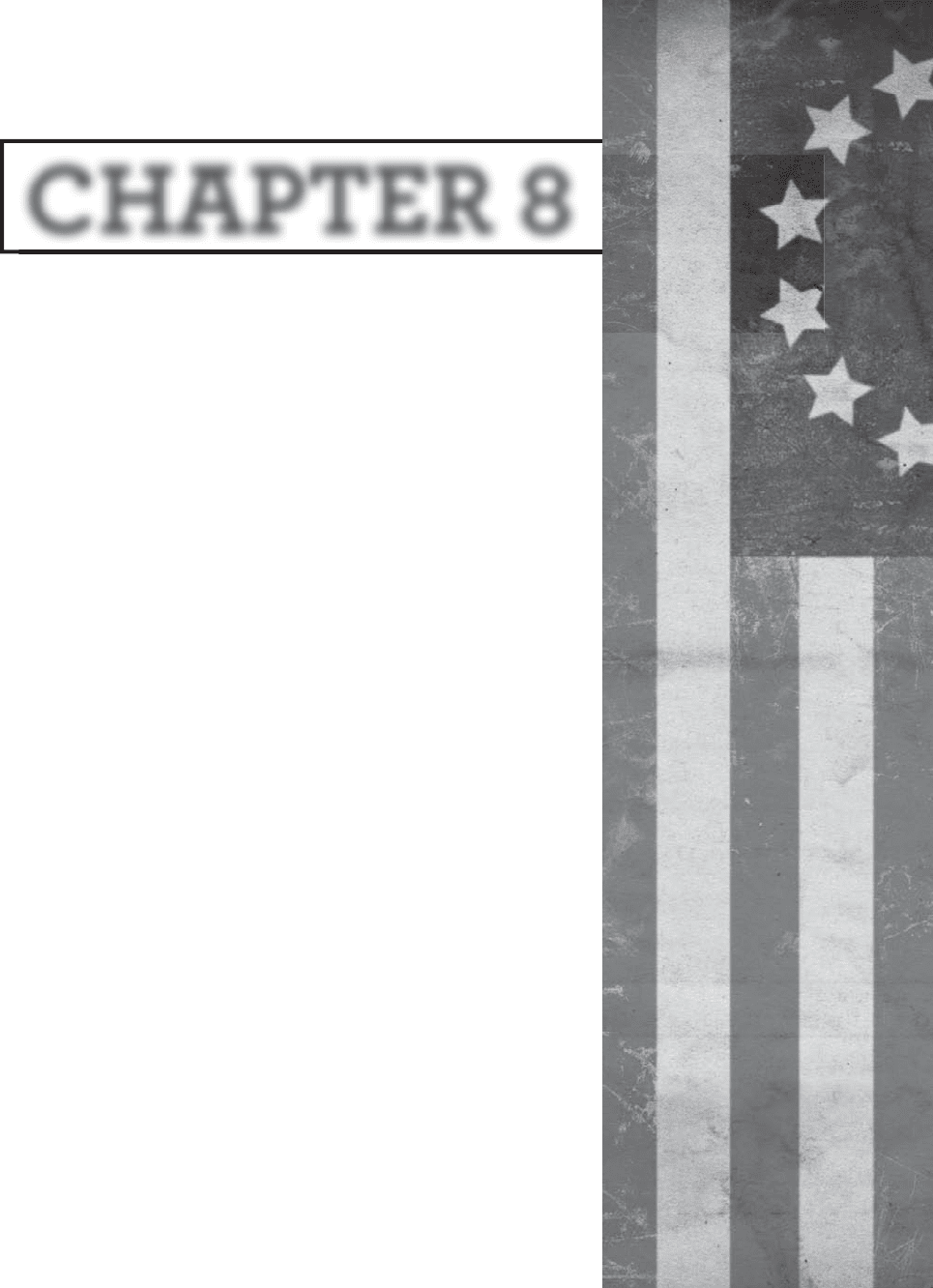
ChAPTER 8
The War of 1812:
An Overview
N
either the British in Canada nor the United States were
prepared for war. Americans were inordinately optimistic
in 1812. William Eustis, the U.S. secretary of war, stated, “We
can take the Canadas without soldiers, we have only to send
o cers into the province and the people . . . will rally round
our standard.” Henry Clay said that “the militia of Kentucky
are alone competent to place Montreal and Upper Canada at
your feet.” And Thomas Je erson famously wrote
The acquisition of Canada this year, as far as the
neighborhood of Quebec, will be a mere matter of
marching, and will give us experience for the attack
of Halifax the next, and the fi nal expulsion of England
from the American continent.
The British government, preoccupied with the European con-
fl ict, saw American hostilities as a bothersome distraction,
resulting in a paucity of resources in men, supplies, and naval
presence until late in the event. As the British in Canada con-
ducted operations under the shadow of scarcity, their only
consolation was an American military malaise. Michigan ter-
ritorial governor William Hull led U.S. forces into Canada
from Detroit, but Isaac Brock and Tecumseh’s warriors chased
Hull back across the border and frightened him into surren-
dering Detroit on Aug. 16, 1812, without fi ring a shot—behaviour
that Americans and even Brock’s o cers found disgraceful.

182 | The American Revolutionary War and the War of 1812: People, Politics, and Power
The Northwest subsequently fell prey to
Indian raids and British incursions led by
Maj. Gen. Henry Procter. Hull’s replace-
ment, William Henry Harrison, could
barely defend a few scattered outposts.
On the northeastern border, U.S. Brig.
Gen. Henry Dearborn could not attack
Montreal because of uncooperative New
England militias. U.S. forces under
Stephen Van Rensselaer crossed the
Niagara River to attack Queenston on
Oct. 13, 1812, but ultimately were defeated
by a sti British defense organized by
Brock, who was killed during the fight.
U.S. Gen. Alexander Smyth’s subsequent
invasion attempts on the Niagara were
abortive fiascoes.
In 1813, Madison replaced Dearborn
with Maj. Gens. James Wilkinson and
Wade Hampton, an awkward arrangement
made worse by a complicated invasion
plan against Montreal. The generals
refused to coordinate their eorts, and
neither came close to Montreal. To the
west, however, American Oliver Hazard
Perry’s Lake Erie squadron won a great
victory o Put-in-Bay on Sept. 10, 1813,
against Capt. Robert Barclay. The battle
opened the way for Harrison to retake
Detroit and defeat Procter’s British and
Indian forces at the Battle of the Thames
(Oct. 5). Tecumseh was killed during the
battle, shattering his confederation and
the Anglo-Indian alliance. Indian anger
continued elsewhere, however, especially
in the southeast where the Creek War
erupted in 1813 between Creek Indian
nativists (known as Red Sticks) and U.S.
forces. The war also took an ugly turn late
in the year, when U.S. forces evacuating
the Niagara Peninsula razed the Canadian
village of Newark, prompting the British
commander, Gordon Drummond, to retal-
iate along the New York frontier, leaving
communities such as Bualo in smolder-
ing ruins.
Early in the war, the small U.S. navy
boosted sagging American morale as
ocers such as Isaac Hull, Stephen
Decatur, and William Bainbridge com-
manded heavy frigates in impressive
single-ship actions. The British Admiralty
responded by instructing captains to
avoid individual contests with Americans,
and within a year the Royal Navy had
blockaded important American ports, bot-
tling up U.S. frigates. British Adm. George
Cockburn also conducted raids on the
shores of Chesapeake Bay. In 1814, Britain
extended its blockade from New England
to Georgia, and forces under John
Sherbrooke occupied parts of Maine.
By 1814, capable American ocers,
such as Jacob Brown, Winfield Scott, and
Andrew Jackson, had replaced ineective
veterans from the American Revolution.
On March 27, 1814, Jackson defeated the
Red Stick Creeks at the Battle of
Horseshoe Bend in Alabama, ending the
Creek War. That spring, after Brown
crossed the Niagara River and took Fort
Erie, Brig. Gen. Phineas Riall advanced to
challenge the American invasion, but
American regulars commanded by Scott
repulsed him at the Battle of Chippewa
(July 5, 1814). In turn, Brown retreated
when Cdre Isaac Chauncey’s Lake
Ontario squadron failed to rendezvous

The War of 1812: An Overview | 183
It is one of the perversities of American history that while Pres. James Madison’s message to
Congress urging the commencement of hostilities against Great Britain in 1812 listed only maritime
grievances as the cause and said nothing about expansionist aims in the Ohio Valley, the Treaty of
Ghent, which in 1814 ended the war, dealt only with those expansionist aims and said nothing about
maritime grievances. But this was only one of many contradictions in a confl ict that began in
confusion and unreadiness, was fought amid disagreements that all but tore the country to pieces,
and then ended in triumph. What Madison really did was take a long chance. Bedeviled by a tangle
of diplomatic and political problems he could not otherwise solve, and largely unprepared for war,
he later admitted that he had “thrown forward the fl ag of the country, sure that the people would
press forward.” The president gave the following message to Congress on June 1, 1812. Source:
A Compilation of the Messages and Papers of the Presidents 1789–1897, James D. Richardson, ed.,
Washington, 1896–1899, Vol. I, pp. 499–505.
I communicate to Congress certain documents, being a continuation of those heretofore
laid before them on the subject of our a airs with Great Britain. Without going back
beyond the renewal in 1803 of the war in which Great Britain is engaged, and omitting
unrepaired wrongs of inferior magnitude, the conduct of her government presents a
series of acts hostile to the United States as an independent and neutral nation.
British cruisers have been in the continued practice of violating the American fl ag on
the great highway of nations, and of seizing and carrying o persons sailing under it, not
in the exercise of a belligerent right founded on the law of nations against an enemy but
of a municipal prerogative over British subjects. British jurisdiction is thus extended to
neutral vessels in a situation where no laws can operate but the law of nations and the
laws of the country to which the vessels belong; and a self-redress is assumed which, if
British subjects were wrongfully detained and alone concerned, is that substitution of
force for a resort to the responsible sovereign which falls within the defi nition of war.
Could the seizure of British subjects in such cases be regarded as within the exercise of a
belligerent right, the acknowledged laws of war, which forbid an article of captured prop-
erty to be adjudged without a regular investigation before a competent tribunal, would
imperiously demand the fairest trial where the sacred rights of persons were at issue. In
place of such a trial, these rights are subjected to the will of every petty commander.
The practice, hence, is so far from a ecting British subjects alone that, under the
pretext of searching for these, thousands of American citizens, under the safeguard of
public law and of their national fl ag, have been torn from their country and from every-
thing dear to them; have been dragged on board ships of war of a foreign nation
and exposed, under the severities of their discipline, to be exiled to the most distant and
deadly climes, to risk their lives in the battles of their oppressors, and to be the melan-
choly instruments of taking away those of their own brethren.
Primary Source: James Madison’s War Message
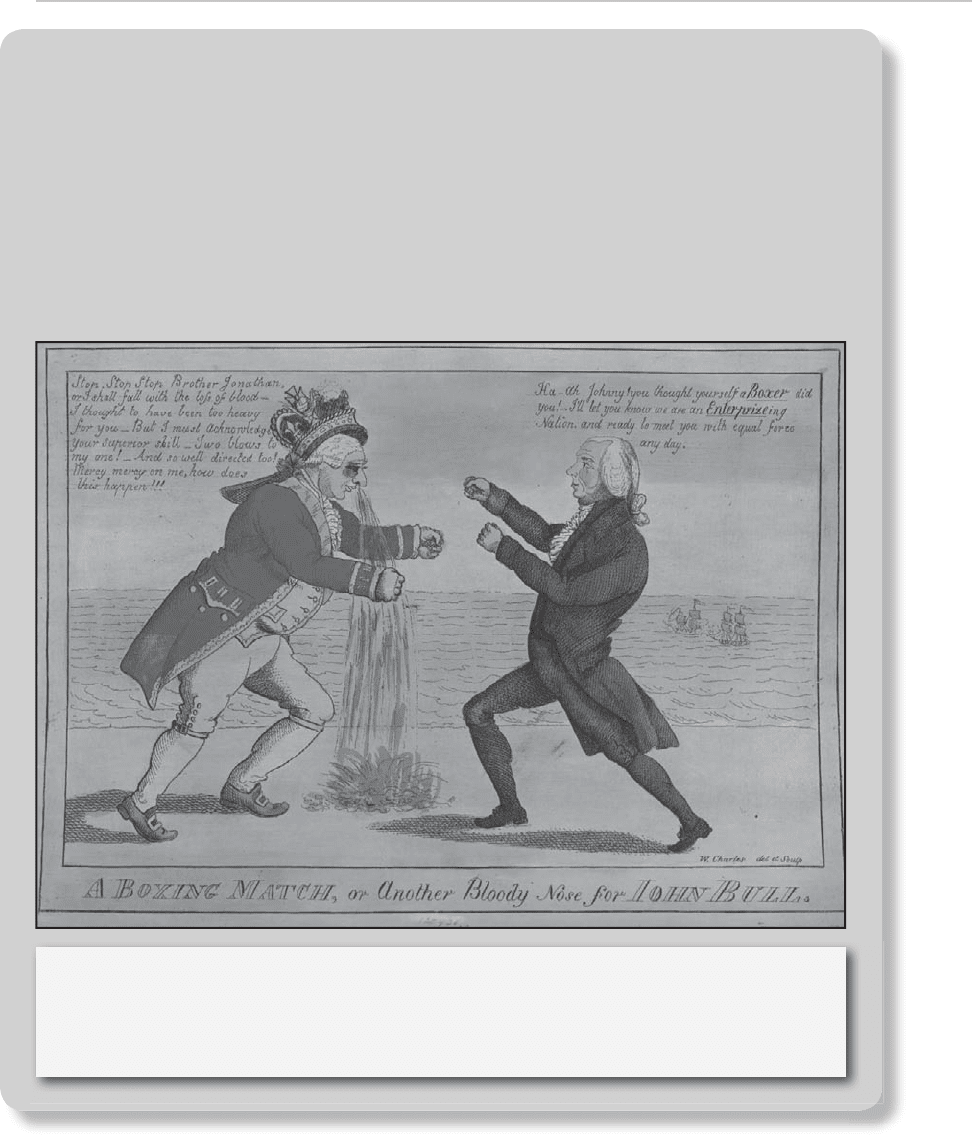
184 | The American Revolutionary War and the War of 1812: People, Politics, and Power
Against this crying enormity, which Great Britain would be so prompt to avenge if
committed against herself, the United States have in vain exhausted remonstrances and
expostulations; and that no proof might be wanting of their conciliatory dispositions, and
no pretext left for a continuance of the practice, the British government was formally
assured of the readiness of the United States to enter into arrangements such as could
not be rejected if the recovery of British subjects were the real and the sole object. The
communication passed without e ect.
British cruisers have been in the practice, also, of violating the rights and the peace
of our coasts. They hover over and harass our entering and departing commerce. To the
most insulting pretensions they have added the most lawless proceedings in our very
harbors, and have wantonly spilled American blood within the sanctuary of our territorial
In this artist’s interpretation of Britain’s naval losses early in the War of 1812, a bloodied
King George III stands to the left of his victorious opponent, Pres. James Madison. The John
Bull referred to in the caption represents the personifi cation of England. Library of Congress
Prints and Photographs Division
